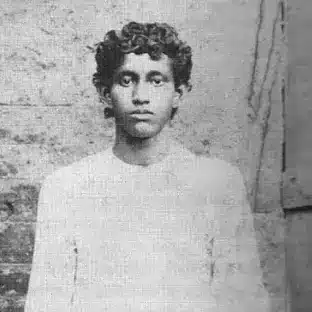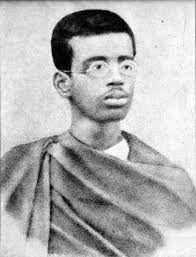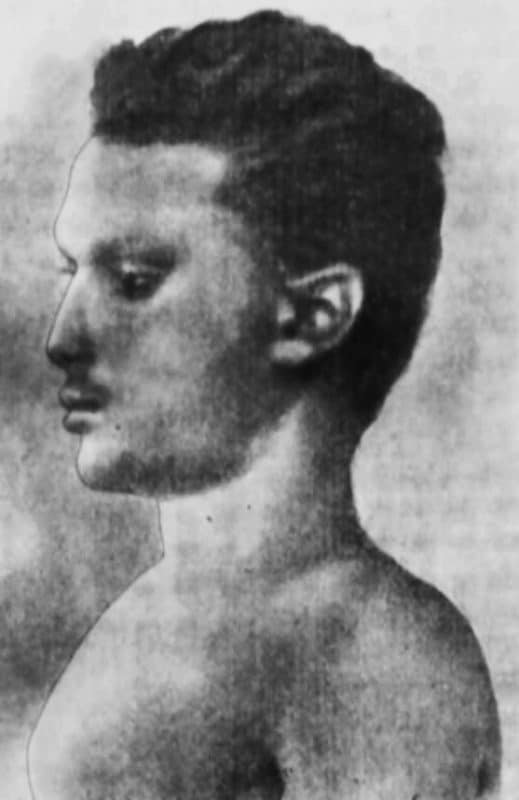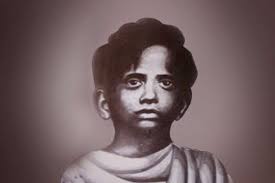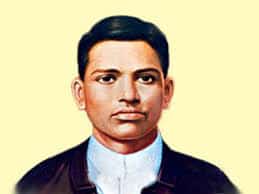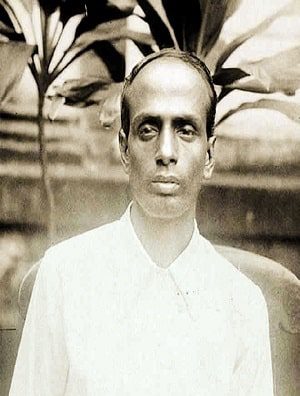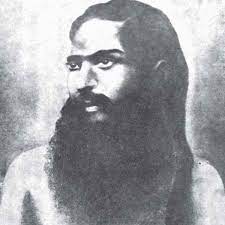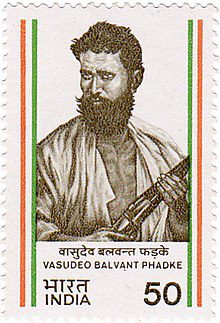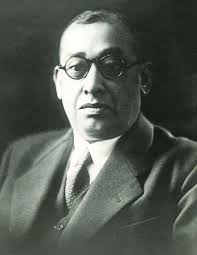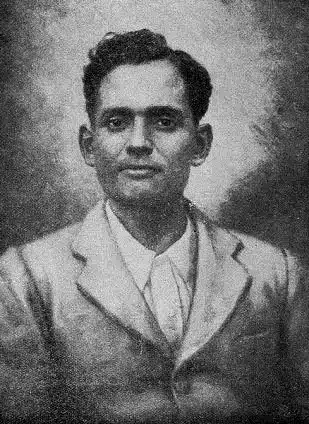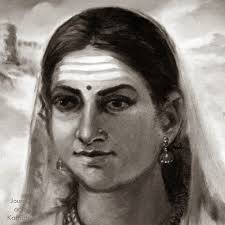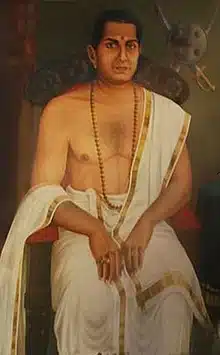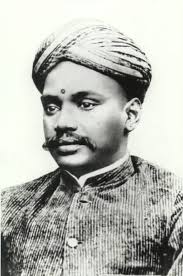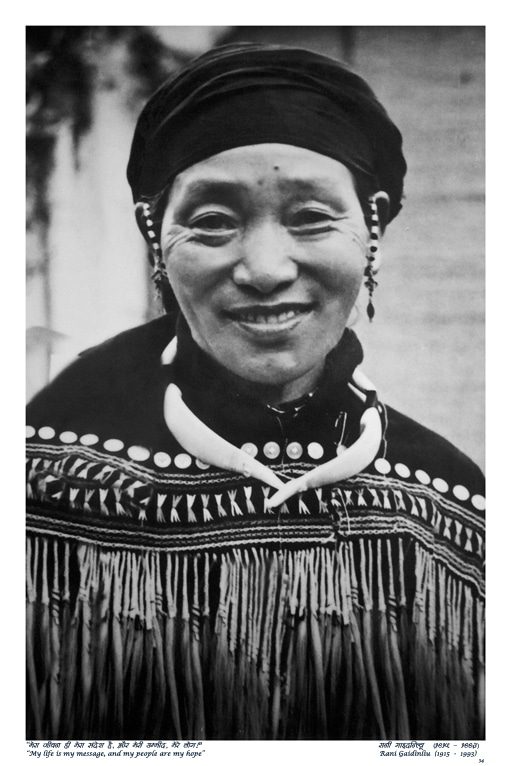We often hear about the many well-known freedom fighters who sacrificed their lives for India’s independence. However, there are countless uncelebrated individuals whose significant contributions remain largely unknown. These brave people, though not widely recognized, played crucial roles in the struggle for India’s freedom and unity. Their sacrifices should never be forgotten.
The Tale of Khudiram Bose :
In the early 20th century, a young revolutionary named Khudiram Bose became a symbol of bravery and sacrifice in India’s quest for independence. At just 18, his life took a dramatic turn when he was sentenced to death for his audacious stand against British oppression. In 1908, Khudiram was given a crucial mission: to eliminate Muzaffarpur’s district magistrate, Kingsford, who was notorious for his brutal treatment of Indian activists. Kingsford’s infamous cruelty had made him a target for those desperate for justice.
On April 20, 1908, Khudiram hurled a bomb at what he thought was Kingsford’s carriage outside the European Club in Muzaffarpur. However, the explosion tragically claimed the lives of the wife and daughter of barrister Pringle Kennedy instead. A massive manhunt ensued, but despite his efforts to escape by walking 25 miles to the Vaini railway station, Khudiram was eventually captured. His fate was sealed, and just a few months later, on August 11, 1908, he was hanged. Khudiram Bose’s story, though often overshadowed, remains a poignant reminder of the unsung heroes who sacrificed everything for India’s freedom, and his legacy endures as a testament to the high cost of independence.
The Courageous Legacy of Kanailal Datta: A Revolutionary’s Sacrifice for Freedom:
Kanailal Datta, born in 1888 in Chandannagore, West Bengal, emerged as a bold revolutionary in the early 20th century. Chandannagore, a French colony at the time, offered a refuge for revolutionaries. Kanailal, son of Chunilal Datta, attended Dupleix Vidyamandir for his early education and later graduated with a BA from Muhammad Mohasin College, Hooghly.
During his school years, Kanailal received arms training and, after completing his BA in April 1908, he acquired a revolver from Matilal Roy of the Prabartak Samgha and moved to Calcutta. Although initially shortlisted for the Muzaffarpur mission, he eventually became involved in bomb-making at Yugantar’s hideout in Gopimohan Datta Lane. His revolutionary activities led to his arrest on 2 May 1908, as a result of the Manicktala Bomb Case, and he was imprisoned in the Alipore Central Jail.
In jail, fellow revolutionary Naren Gosain turned informant, claiming that all revolutionary plans, from Muzaffarpur to Alipore, were orchestrated by Aurobindo Ghosh. To prevent Gosain from testifying in court, Kanailal and Satyendranath Bose were chosen to eliminate him. Their daring act was hailed by Matilal Roy as a testament to their heroism and ultimate sacrifice for the motherland. Both Kanailal and Satyendranath were sentenced to death.
When the British Magistrate questioned Kanailal, then just twenty, about his crime, he boldly declared, “I have killed a traitor.” Refusing to appeal his sentence, Kanailal was hanged on 10 November 1908. His execution day saw one of Calcutta’s longest processions, a somber tribute to his unwavering commitment to India’s freedom struggle.
The Legacy of Prafulla Chaki:
Prafulla Chaki, born on December 10, 1888, in a village in Bogra, was a young revolutionary whose life embodied immense courage and sacrifice. Raised by his mother after losing his father, Chaki’s early education and involvement in the “Bandhab Samiti” sparked his revolutionary zeal. Expelled from Rangpur Zilla School for protesting the Carlisle Circular, he joined Rangpur National School, where he met influential leaders who deepened his commitment to the freedom movement. His activism led him to Calcutta, where he became part of the Jugantar group under Barindra Kumar Ghosh and was soon involved in attempts to assassinate key British officials.
In 1908, Chaki, with fellow revolutionary Khudiram Bose, was assigned to eliminate Kingsford, a despised magistrate known for his harsh treatment of political activists. Their attempt to bomb Kingsford’s carriage on April 30, 1908, tragically missed its target and instead killed Mrs. and Ms. Kennedy. Following the failed attack, Chaki and Bose fled, but Chaki was captured at Samastipur Railway Station the next morning. Rather than surrender, he ended his life with his revolver. Prafulla Chaki’s story remains a poignant testament to the bravery and sacrifice of those who fought for India’s independence, honoring the countless unsung heroes of the struggle.
The Brave Sacrifice of Baji Rout:
Baji Rout, just 12 years old, stands as the youngest martyr in India’s freedom struggle, embodying extraordinary courage and sacrifice. Born on October 5, 1926, in Nilakanthapur village, Dhenkanal, Baji’s early life was marked by hardship after the death of his father and his mother’s struggle to support the family. Despite these challenges, Baji’s spirit remained unbroken as he witnessed the oppressive rule of local kings and the economic exploitation suffered by his community.
The Prajamandal Movement in the late 1930s was a beacon of resistance against such oppression, with Dhenkanal becoming a hotspot of protest against King Shankar Pratap Singhdeo’s repressive policies. On October 12, 1938, as police forces clamped down on the movement, Baji and his fellow villagers attempted to block the ferry service to prevent the police from crossing the Brahmani River. In the ensuing clash, Baji and five others were tragically killed. His sacrifice was a poignant reminder of the price paid for India’s freedom, and his story remains a powerful symbol of bravery and resistance, inspiring future generations in Odisha and beyond.
Anant Laxman Kanhere: A Bold Revolutionary Spirit :
Anant Laxman Kanhere, born on January 7, 1892, in the small village of Aayani in Ratnagiri District, emerged as a fearless freedom fighter from Nashik. Growing up in a Chitpavan Brahmin family, Kanhere pursued his education in Nizamabad and later in Aurangabad, where he became involved with revolutionary groups. His connections with key figures like Gangaram and Ganu Vaidya deepened his commitment to the cause of Indian independence.
At just 18 years old, Kanhere’s resolve led him to a daring act of defiance: on December 21, 1909, he assassinated the Collector of Nashik, Jackson. This bold action was not just a personal stand but a significant event in the broader revolutionary movement of Maharashtra. Inspired by leaders like the Savarkar brothers and Madanlal Dhingra, Kanhere’s sacrifice—though sometimes overshadowed—remains a powerful symbol of the relentless fight for India’s freedom. His story continues to inspire and remind us of the courage and determination of those who sought to end British rule.
Surya Sen: The Master of Revolutionary Resolve:
Surya Sen, born on March 22, 1894, in Noapara, Chittagong, stands out as a towering figure in India’s freedom struggle. Often hailed by his title, Masterda, Sen was a fearless leader in the fight against British colonial rule. Coming from a Baidya family, he was deeply involved in the Non-Cooperation Movement and was imprisoned from 1926 to 1928 for his revolutionary activities. Known for his inspirational leadership, he once declared, “Humanism is a distinctive virtue of a revolutionary.”
On April 18, 1930, Sen led the daring Chittagong armoury raid, aiming to capture weapons and disrupt British communications. While the raid did not secure the munitions, it was a bold statement of resistance. Following the raid, Sen and his comrades continued to resist British authorities, but he was eventually captured on February 16, 1933. Tried and executed on January 12, 1934, Sen’s sacrifice and unwavering commitment remain a powerful symbol of India’s relentless struggle for independence.
Alluri Sitarama Raju: The Hero of the Jungles
Alluri Sitarama Raju, born into a prosperous Kshatriya family in Andhra Pradesh, emerged as a pivotal figure in the Indian independence movement through his leadership in the Rampa Rebellion of 1922–24. The rebellion was ignited by the oppressive 1882 Madras Forest Act, which curtailed the traditional practices of tribal communities, including their essential shifting cultivation, or podu agriculture. Raju, deeply affected by the harsh restrictions imposed by the British Raj, rallied the tribal people of the Agency areas to resist.
Leading a determined band of tribal leaders and sympathizers, Raju’s fearless efforts earned him the title “ManyamVeerudu,” or Hero of the Jungles, from the local communities. His legacy was formally recognized when the Indian Postal Department issued a commemorative stamp in his honor in 1986, as part of the ‘India’s Struggle for Freedom’ series. Further commemorating his contributions, a statue of Alluri Sitarama Raju was installed at the Parliament of India on October 9, 2017, following advocacy by parliamentarians Thota Narasimham and V. Vijayasai Reddy. This tribute highlights Raju’s enduring impact on the freedom movement and his unwavering dedication to tribal welfare.
The Legacy of Vasudeo Balvant Phadke: Father of the Armed Struggle for India’s Freedom:
Vasudeo Balvant Phadke, often revered as the ‘Father of the Armed Struggle for India’s Freedom,’ was a pioneering revolutionary who laid crucial groundwork for the fight against British rule. Inspired by the valor of Shivaji, Phadke’s fervent dedication to the cause set the stage for future movements and leaders. His commitment to Khadi and Swadeshi reflected his deep belief in self-reliance and national pride.
In 1874, Phadke established the Aikyavardhini Sabha to voice popular grievances and founded Pune’s first school of nationalist education, marking a significant step in fostering nationalist sentiment. The British government’s unjust actions, such as the deposition of the Gaikwaad of Baroda and their indifferent response to famine, sparked public discontent. Phadke harnessed this discontent, rallying around 300 tribal warriors to challenge British strongholds. Though his attacks had limited success, they drew significant attention. His audacity was exemplified when he offered a reward for the capture of the Governor of Bombay in retaliation for the British government’s bounty on him. Captured in July 1879 in the Nizam’s dominion, Phadke was exiled to Aden, where he passed away on February 17, 1883. His revolutionary spirit and relentless dedication to India’s freedom struggle continue to inspire and resonate in the nation’s history.
Rash Behari Bose: The Revolutionary Architect of India’s Independence Movement:
Rash Behari Bose, born on May 25, 1886, in Subaldaha, West Bengal, was a pivotal figure in India’s independence struggle, whose revolutionary zeal laid the groundwork for the Indian National Army (INA). His passion for freedom was ignited during his time at Dupleix College in Chandernagore, then a French colony, where he was inspired by the ideals of the French Revolution. This influence drove him to take bold actions against British rule, including orchestrating an assassination attempt on Viceroy Lord Hardinge in 1912. Although the attempt failed, it marked him as a significant threat to British interests.
Bose’s revolutionary activities extended to the Ghadar Movement, which sought to incite a mutiny in the British Indian Army during World War I. After the movement’s failure, he fled to Japan in 1915, where he found support from Pan-Asian groups. There, he married a Japanese woman and became a Japanese citizen in 1923, which shielded him from British attempts at extradition. During World War II, Bose played a crucial role in rallying Japanese support for India’s independence movement. In March 1942, he founded the Indian Independence League, a precursor to the Indian National Army (INA), which was later led by Subhash Chandra Bose. For his efforts, the Japanese honored him with the “Order of the Rising Sun.” Rash Behari Bose passed away on January 21, 1945, from tuberculosis, leaving behind a significant legacy in India’s fight for freedom.
The Unyielding Spirit of Jatindra Nath Das: A Young Revolutionary’s Sacrifice for India’s Freedom:
Jatin Mukherjee, famously known as Bagha Jatin, remains a significant yet under-recognized figure in India’s struggle for independence. Born in 1879 in Koya, Kushtia district, Jatin’s early bravery earned him the moniker “Bagha” (Tiger) after he single-handedly killed a tiger with a dagger. Inspired by Swami Vivekananda and Aurobindo Ghosh, Jatin embraced a militant nationalist ideology and became a prominent leader in the Bengal revolutionary movement. His revolutionary spirit was exemplified by his involvement in the Chhatra Bhandar, a student cooperative that became a hub for young revolutionaries.
In 1914, Jatin’s revolutionary efforts gained international dimensions when he sought support from German groups during World War I. Despite the ultimate failure of the planned uprising, Jatin’s meticulous preparations, including securing arms and planning insurrections, highlighted his strategic depth. On September 9, 1915, Jatin and his followers faced a fierce battle with British forces in the jungles near Balasore. Wounded and eventually captured, Jatin succumbed to his injuries, but his legacy endures. His life and sacrifice remain a testament to the early fervor and dedication of India’s freedom fighters, commemorated by a statue near the Victoria Memorial in Kolkata.
Jatindra Nath Das, another symbol of courage and sacrifice, made significant contributions to India’s independence movement and the fight for political prisoner rights. An active member of the Anushilan Samiti and the Hindustan Republican Socialist Association (HRSA), Jatindra was involved in revolutionary activities from a young age. At 25, he undertook a 63-day hunger strike in Lahore Central Jail to protest the harsh conditions faced by political prisoners. Despite severe health issues, including lung damage and paralysis, Jatindra’s resolve remained unshaken. His sacrifice and bravery were acknowledged by Subhas Chandra Bose, who referred to him as the “young Dadhichee” of the nation. Jatindra Nath Das’s enduring legacy continues to inspire as a symbol of selflessness and dedication to justice.
Kittur Rani Chennamma: The Queen Who Defied the British Raj :
Born on October 23, 1778, in Kittur (now in Karnataka’s Belgaum district), she faced personal loss early on, with her father passing away and her subsequent marriage to Raja Mallasarja of another kingdom. Following her husband’s death, Chennamma ascended to the throne in 1824, chosen by her people to lead Kittur. However, her reign was soon challenged by the British East India Company, which sought to expand its control and demanded Chennamma’s acceptance of their suzerainty, which she resolutely refused.
The British, implementing the Doctrine of Lapse introduced by Lord Dalhousie, sought to annex Kittur by denying Chennamma’s legitimacy as a ruler. In 1829, after Chennamma adopted a son as her heir, the British continued to interfere and, following a series of brutal confrontations, captured Chennamma and her lieutenant, Sangolli Rayanna. She was imprisoned in Bailhongal Fort under harsh conditions, leading to her death on February 21, 1829, at the age of 30. Despite the annexation of Kittur, Chennamma’s resistance left a lasting legacy as a symbol of courage and women’s empowerment in the fight against colonial oppression. Her contributions were posthumously recognized in 1956, when the Indian government honored her with the title of ‘Rani,’ celebrating her enduring spirit of resistance.
The Legacy of Pazhassi Raja: Kerala’s Fearless Warrior Against British Rule:
Pazhassi Raja, born in 1753 in Kottayam, Kerala, is a revered figure in Indian history for his staunch resistance against British colonial rule. Ascending to the throne in 1774, he led a fierce struggle against British encroachment, particularly during Pazhassi Raja’s War from 1793 to 1805. Despite the British East India Company’s superior resources and numbers, Pazhassi Raja leveraged his strategic acumen and intimate knowledge of the Wayanad forests to execute successful ambushes and guerrilla tactics, earning him the title “Kerala Simham” or “Lion of Kerala.”
Pazhassi Raja’s resistance was marked by his efforts to unite local leaders and tribal communities, emphasizing the importance of collective action against colonial oppression. His fight was driven not just by a desire to defend territory but to preserve Kerala’s cultural heritage and freedom. His relentless struggle continued until his death in 1805, and his legacy endures as a symbol of courage and resilience. In Kerala, his contributions are celebrated through literature, films, and music, with numerous places and institutions named in his honor. Pazhassi Raja’s life remains a powerful testament to the bravery and perseverance required in the fight for freedom, inspiring future generations and underscoring the spirit of resistance in Kerala’s history.
V.O. Chidambaram Pillai: The Swadeshi Ship Pioneer Who Never Gave Up:
V.O. Chidambaram Pillai, honored with the title ‘Kappalottiya Tamilan’ or ‘the Tamilian who ran the ship,’ is a towering figure in Indian history known for his extraordinary contributions to the independence movement. Born on September 5, 1872, in Ottapidaram, Tuticorin district, Pillai transitioned from a prosperous lawyer to a key freedom fighter, driven by a deep commitment to India’s liberation. Influenced by his grandparents’ stories of Lord Shiva and the Ramayana, and inspired by leaders like Lokamanya Tilak, he left his successful legal career to fight for the nation.
Pillai’s most significant achievement was establishing the first Indian-owned shipping company in defiance of the British India Steam Navigation Company’s monopoly. He traveled extensively to raise capital for his venture, enduring fierce competition and severe financial losses. His efforts were met with brutal repression from the British, including two life sentences totaling 40 years. Despite the harsh conditions and forced labor that left his hands bloodied, Pillai’s resolve remained unshaken. He viewed his suffering as a spiritual journey and continued to inspire others through his writings. Upon his release, despite being largely forgotten by those he had fought for, Pillai’s legacy lived on. His life remains a powerful testament to the ideals of patriotism and sacrifice, symbolizing hope and resilience in India’s struggle for freedom.
Gaidinliu: The Courageous Naga Leader Who Fought for Freedom:
Gaidinliu, born on January 26, 1915, in the Tamenglong district of Manipur, is a revered figure in India’s struggle for independence and the Naga movement for self-rule. Her deep commitment to the Heraka movement, which aimed at revitalizing Naga tribal religion and achieving self-governance (Naga Raj), began at an early age. By 1927, at just 13 years old, she had joined forces with her cousin, Haipou Jadonang, to advance this cause.
Her activism led to her arrest in 1932 at the age of 16. Over the next 15 years, she endured harsh imprisonment in various jails across Northeast India, yet her resolve remained unshaken. Following her release in 1947, Gaidinliu continued to work for the betterment of her people. Her bravery and dedication earned her recognition from Jawaharlal Nehru, who honored her with the title of ‘Rani’ and praised her as the “daughter of the hills.” She was later awarded the Padma Bhushan in recognition of her contributions.
To commemorate her legacy, a park and statue have been established in Silchar, Assam, and the Government of India issued a postal stamp in her honor in 1996, followed by a commemorative coin in 2015. Gaidinliu’s life and work symbolize resilience and courage in the fight against colonial oppression and for cultural and political autonomy. Her story continues to inspire and highlight the sacrifices made in the quest for freedom and self-governance.


